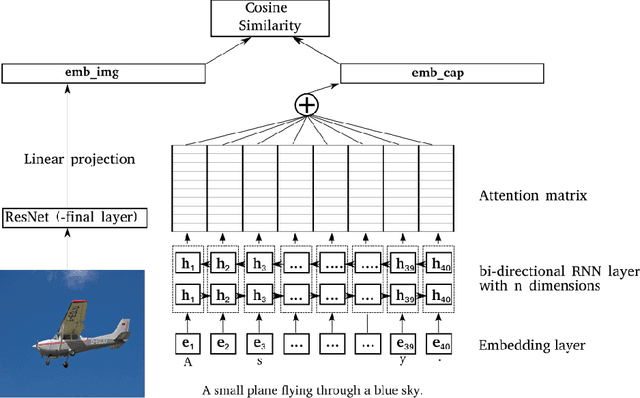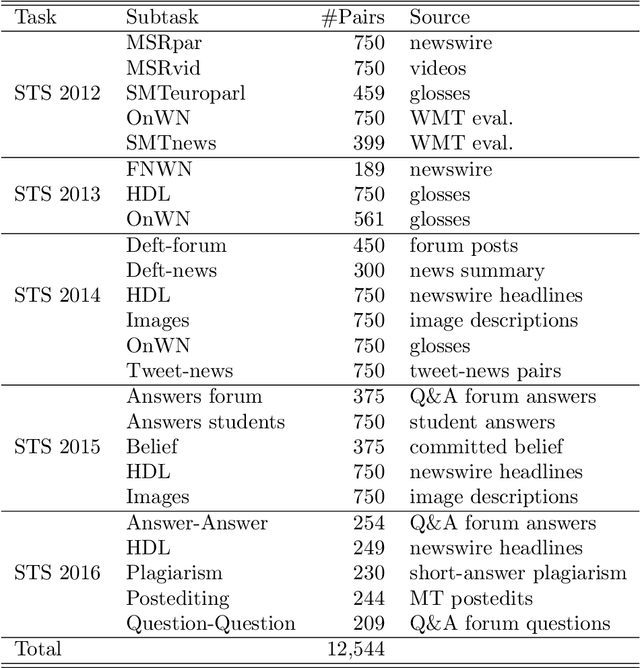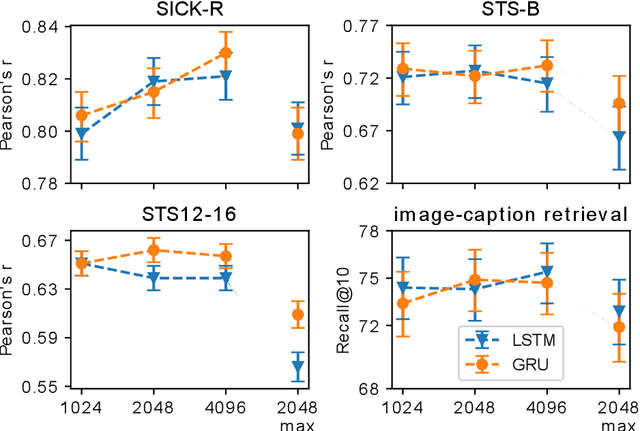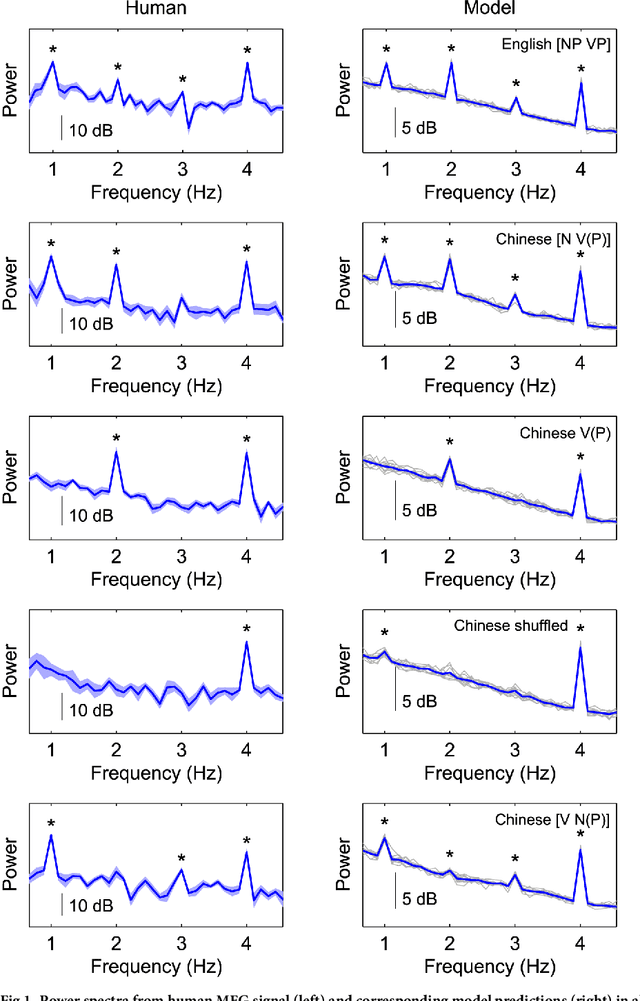Stefan Frank
Learning semantic sentence representations from visually grounded language without lexical knowledge
Mar 27, 2019



Abstract:Current approaches to learning semantic representations of sentences often use prior word-level knowledge. The current study aims to leverage visual information in order to capture sentence level semantics without the need for word embeddings. We use a multimodal sentence encoder trained on a corpus of images with matching text captions to produce visually grounded sentence embeddings. Deep Neural Networks are trained to map the two modalities to a common embedding space such that for an image the corresponding caption can be retrieved and vice versa. We show that our model achieves results comparable to the current state-of-the-art on two popular image-caption retrieval benchmark data sets: MSCOCO and Flickr8k. We evaluate the semantic content of the resulting sentence embeddings using the data from the Semantic Textual Similarity benchmark task and show that the multimodal embeddings correlate well with human semantic similarity judgements. The system achieves state-of-the-art results on several of these benchmarks, which shows that a system trained solely on multimodal data, without assuming any word representations, is able to capture sentence level semantics. Importantly, this result shows that we do not need prior knowledge of lexical level semantics in order to model sentence level semantics. These findings demonstrate the importance of visual information in semantics.
Lexical representation explains cortical entrainment during speech comprehension
Jan 10, 2018
Abstract:Results from a recent neuroimaging study on spoken sentence comprehension have been interpreted as evidence for cortical entrainment to hierarchical syntactic structure. We present a simple computational model that predicts the power spectra from this study, even though the model's linguistic knowledge is restricted to the lexical level, and word-level representations are not combined into higher-level units (phrases or sentences). Hence, the cortical entrainment results can also be explained from the lexical properties of the stimuli, without recourse to hierarchical syntax.
 Add to Chrome
Add to Chrome Add to Firefox
Add to Firefox Add to Edge
Add to Edge